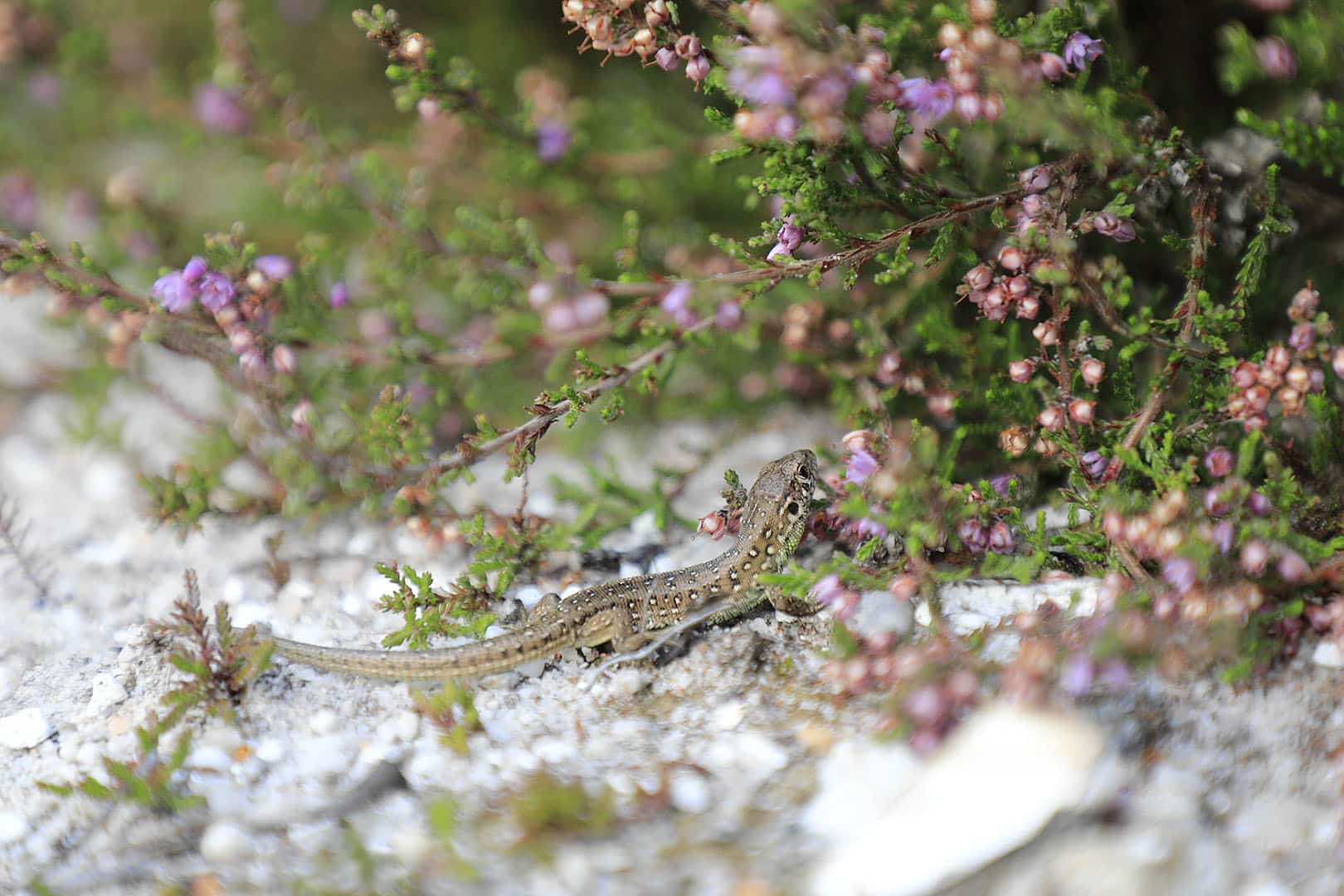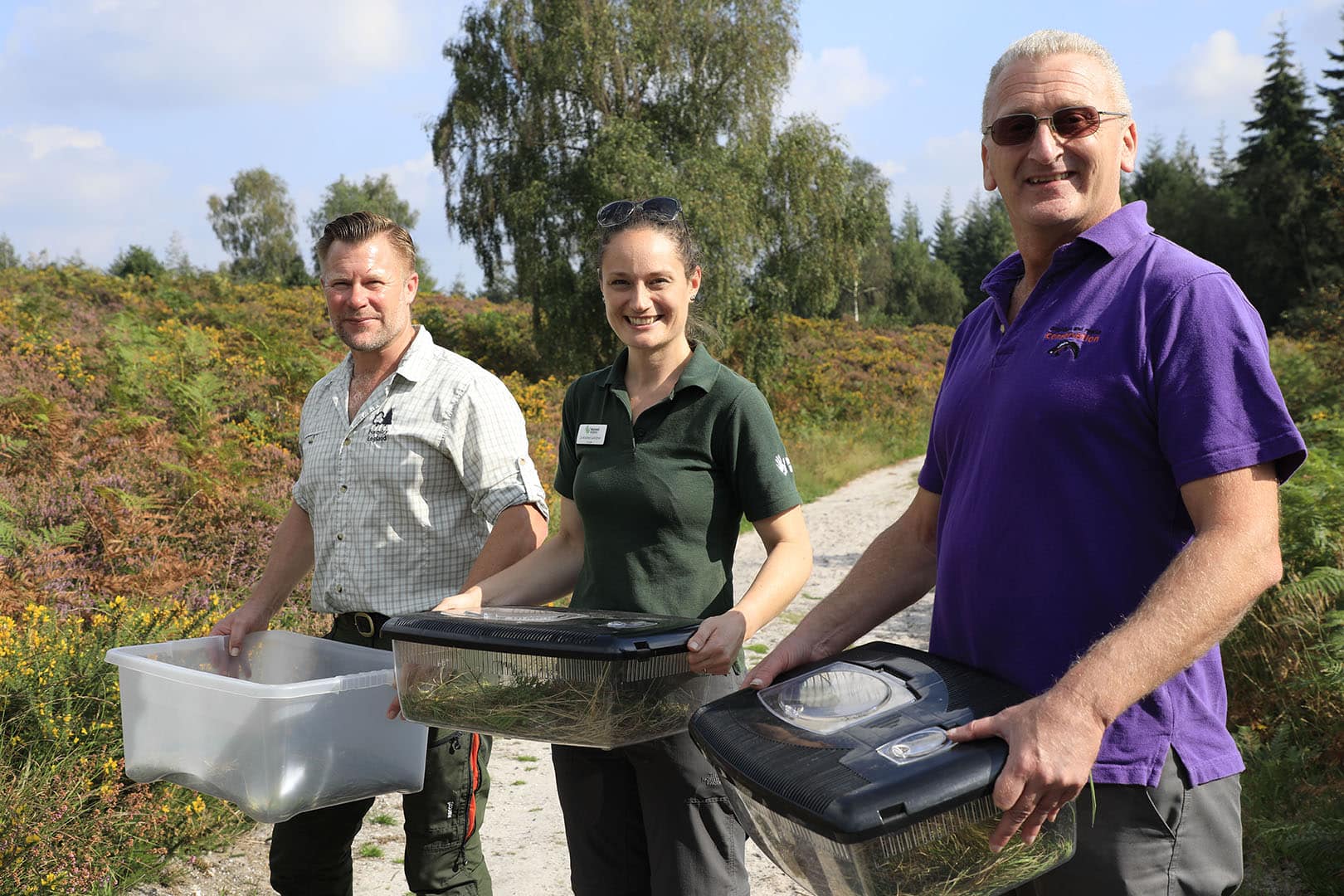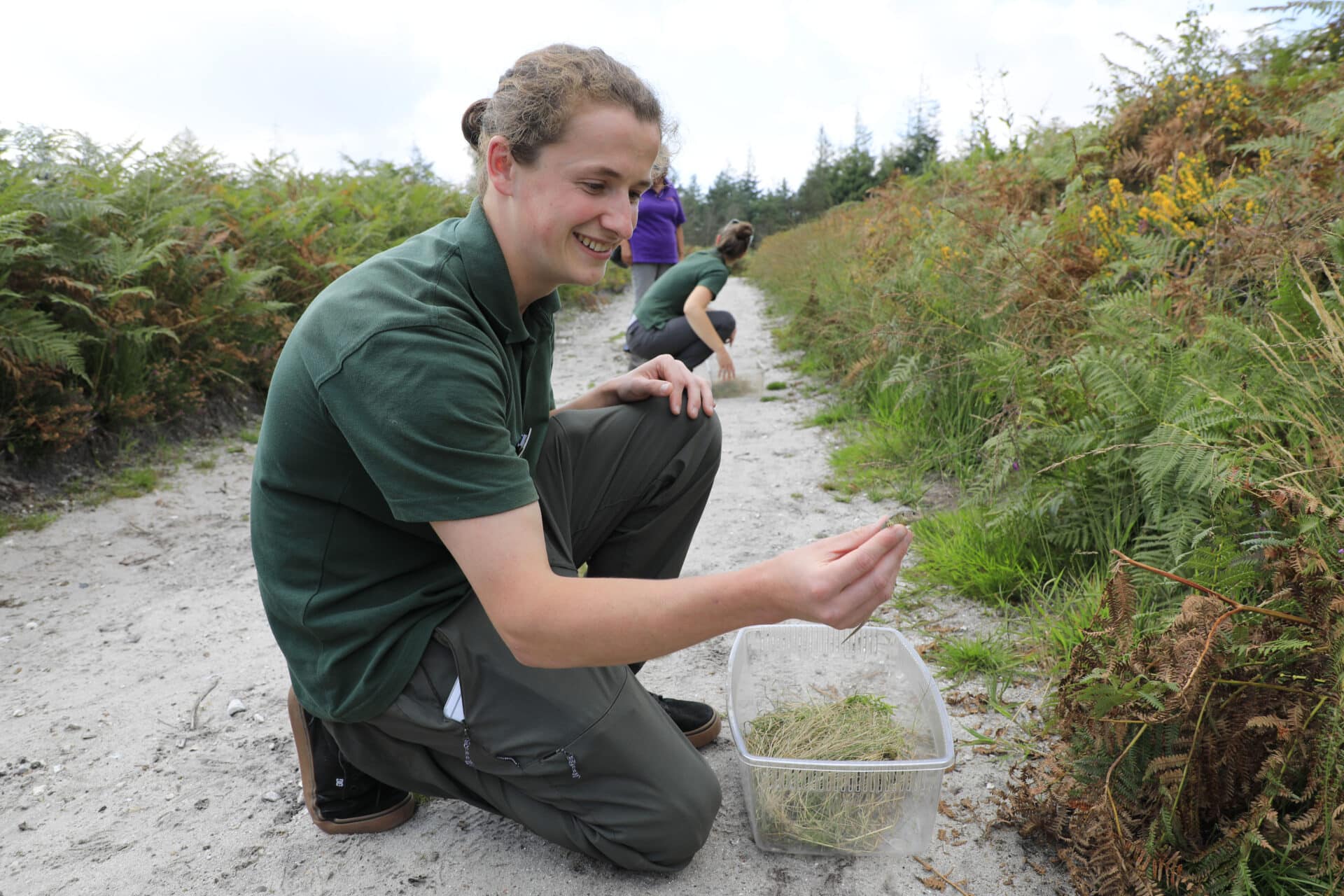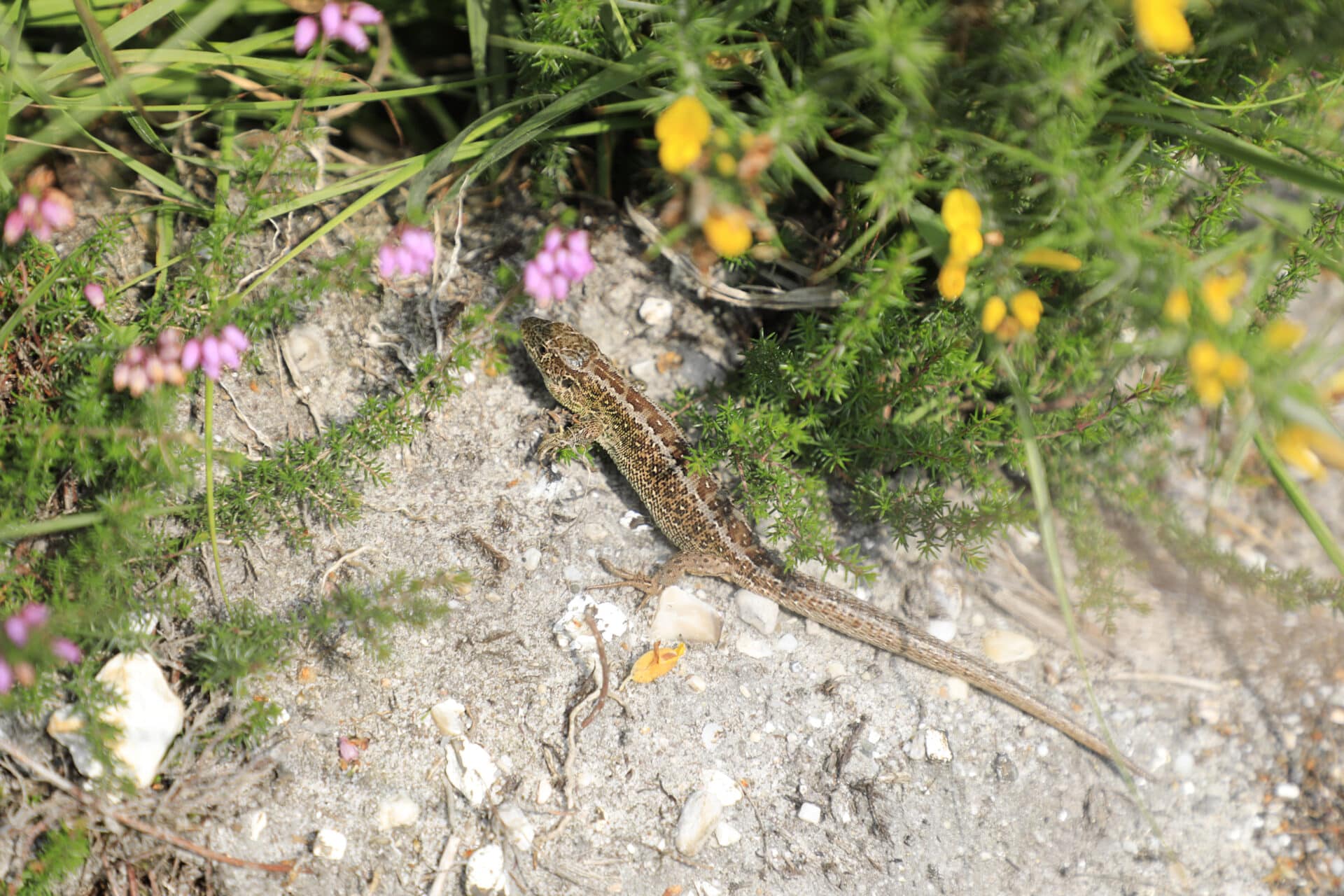Boost for UK’s rarest lizard as over 140 are released back into the wild
September 23, 2021
September 23, 2021
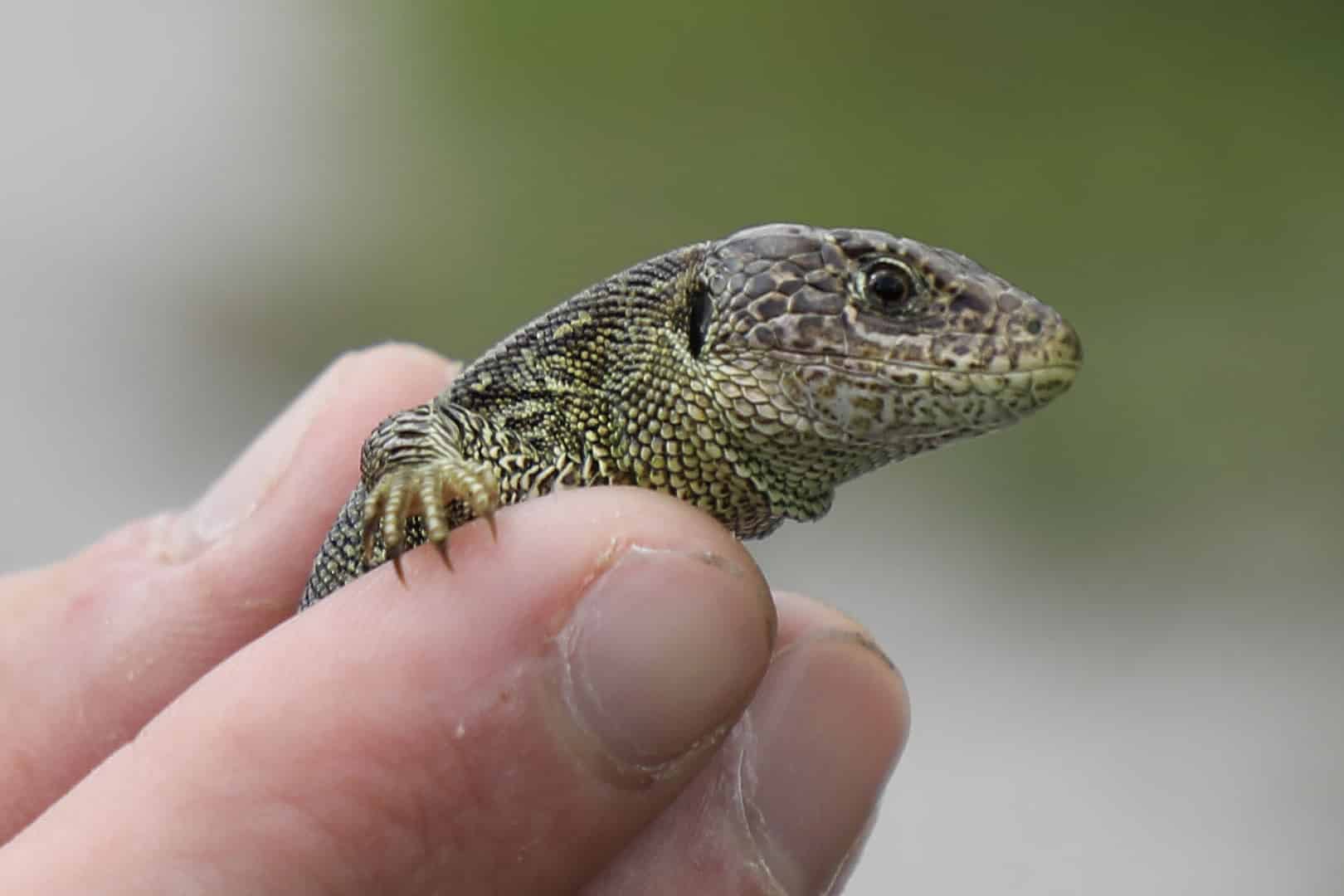
A group of the UK’s rarest lizard – the Sand Lizard – have been released back into the wild in Dorset. Over 140 of these endangered species, bred at several locations including Marwell Zoo and Forestry England’s New Forest Reptile Centre, were released in a partnership project led by Amphibian and Reptile Conservation (ARC) to return these species from near extinction.
The young sand lizards were reintroduced on Forestry England land in Dorset and follow on from a group of 200 released in the same spot last year. Despite an unfavourable spring, many lizards managed to lay two clutches of eggs and the lack of prolonged hot or wet periods over the summer helped these to remain in good condition, prior to being excavated and incubated until hatching.
Once widespread in England, sand lizards have declined considerably owing to loss of suitable habitats and are now only found in a few isolated areas of southern England and Merseyside. ARC recently carried out a country-wide survey of the species, classifying them as still highly endangered in the UK. Reintroductions in several locations across the UK are seeking to boost numbers and restore the habitats these rare animals need to thrive.
Dorset is one of the key strongholds for Sand Lizards with over 70% of the remaining UK population found here. Ongoing habitat restoration at Forestry England release sites in the area ensures the new populations have suitable habitat. The work includes removing dominating vegetation to open up the sandy areas needed for breeding.
In the UK sand lizards are dependent on dry, sandy lowland heathland or coastal sand dunes. Growing to around 20cms long, females can be identified by their sandy-brown colour with rows of dark and white spots called ocelli along their backs. Males have vivid green flanks which are particularly distinctive during the breeding season.
The restoration of sand lizards to heathland habitat is a vital part of a wider conservation and environmental recovery. Sand lizards are good indicators of a healthy ecosystem where flora and fauna are thriving.
Rachel Gardner, Ecologist at Marwell Wildlife, said: “Our conservation breeding population of sand lizards has had another exceptional year. This is Marwell’s thirty third year of involvement with the sand lizard reintroduction project and prior to this we have contributed over 2,200 lizards to releases in the south of England. Marwell Wildlife is committed to the restoration of species and habitats and we are thrilled to be able to continue supporting this vital conservation work. More widely we have seen favourable trends for native wildlife populations in 2021 across the protected areas we have restored and manage. It is wonderful that this is reflected in our contribution of sand lizard hatchlings to the release in Dorset this year.”
Nick Moulton, Reptile Conservation Officer for ARC, said: “We are delighted to be able to release an encouragingly high number of sand lizards again this year. Conservation projects like this rely on the hard work and support of multiple agencies. We are extremely grateful to Forestry England for supporting the releases and their ongoing management of key habitats, and to Marwell Zoo and our breeding partners for their captive breeding expertise and ongoing support of this project.”
“The amazing work taking place to restore and care for heathlands is playing a vital role in re-establishing the UK’s population of these incredible reptiles. It is still early days, but data from our introductions in Dorset over recent years is showing promising signs of ongoing breeding and the establishment of populations across a growing area. Today’s release of the next group of young sand lizards is another important milestone in continuing this recovery of a critical species.”
Mark Warn, Wildlife Ranger, Forestry England, said: “Dorset’s heathlands and forests are home to some of the UK’s rarest wildlife and we work hard to ensure they have the right habitats to thrive here. Projects like this require commitment over the long term and whilst there is still much more work to be done it’s really encouraging to see the positive progress being made by the sand lizards released over the last few years. We hope today’s release will further boost their population.”
The sand lizard released in Dorset over recent years have been bred at Marwell’s specialist reptile breeding centre, Forestry England’s Reptile Centre, Avon Heath Country Park and by local wildlife specialist Martin Noble. Working closely with Amphibian and Reptile Conservation the juveniles are released each year at strategic locations with the long-term aim of growing the population and building the connections between different colonies.
Photo Credit: Forestry England
